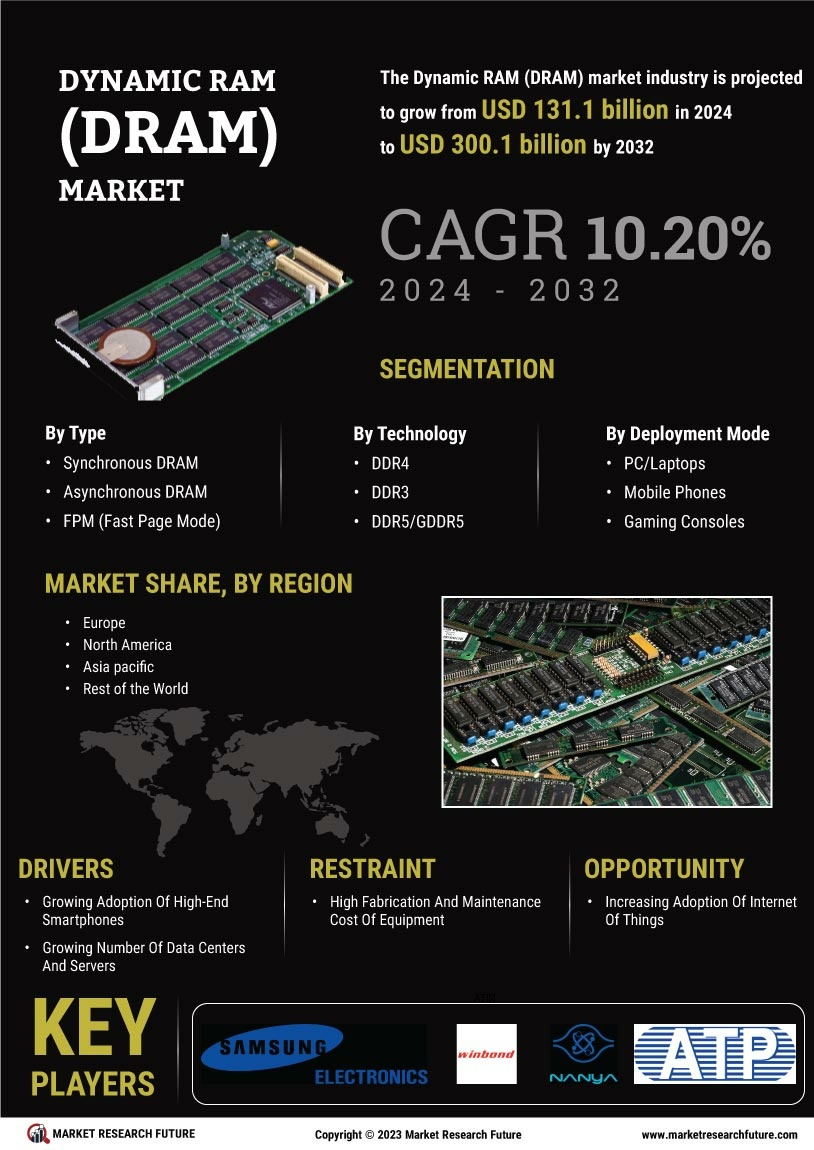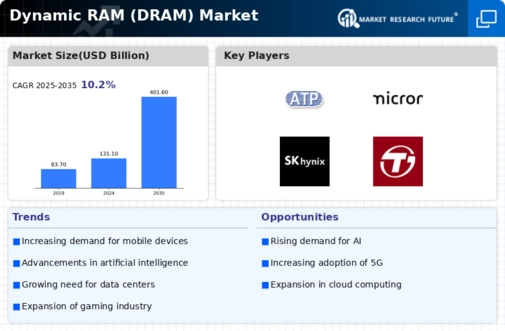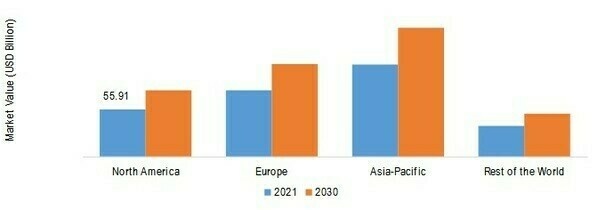Market Growth Projections
The Global Dynamic RAM (DRAM) Market Industry is projected to experience substantial growth, with estimates indicating a market value of 131.1 USD Billion in 2024 and a remarkable increase to 401.6 USD Billion by 2035. This trajectory suggests a compound annual growth rate (CAGR) of 10.71% from 2025 to 2035. Such projections underscore the increasing reliance on DRAM across various sectors, driven by technological advancements and evolving consumer demands. The anticipated growth reflects the critical role of DRAM in supporting emerging applications and innovations, positioning the industry for a dynamic future.
Emergence of 5G Technology
The Global Dynamic RAM (DRAM) Market Industry is benefiting from the emergence of 5G technology, which is set to revolutionize connectivity and data transmission. The deployment of 5G networks necessitates advanced memory solutions to handle increased data traffic and support high-speed applications. DRAM plays a pivotal role in enabling devices to leverage the full potential of 5G, particularly in sectors such as automotive, healthcare, and smart cities. As 5G adoption accelerates, the demand for DRAM is expected to rise, contributing to the overall market growth and aligning with future projections of substantial market expansion.
Growth of Cloud Computing Services
The Global Dynamic RAM (DRAM) Market Industry is poised for growth due to the expansion of cloud computing services. As businesses migrate to cloud-based platforms, the demand for robust memory solutions increases to support data processing and storage needs. DRAM is essential for ensuring optimal performance in cloud environments, where rapid access to data is crucial. The ongoing digital transformation across various sectors is likely to drive the adoption of DRAM in cloud infrastructure. This trend suggests a sustained increase in market value, with a compound annual growth rate (CAGR) of 10.71% projected for the period from 2025 to 2035.
Increasing Demand for Consumer Electronics
The Global Dynamic RAM (DRAM) Market Industry is experiencing heightened demand driven by the proliferation of consumer electronics. Devices such as smartphones, tablets, and laptops require substantial memory capacity to support advanced functionalities. In 2024, the market is projected to reach 131.1 USD Billion, reflecting the growing reliance on DRAM for seamless performance in these devices. As technology evolves, consumers increasingly seek devices with enhanced processing capabilities, which in turn fuels the demand for higher-density DRAM solutions. This trend is likely to continue, as innovations in consumer electronics necessitate more sophisticated memory solutions.
Rising Adoption of Gaming and High-Performance Computing
The Global Dynamic RAM (DRAM) Market Industry is significantly impacted by the rising adoption of gaming and high-performance computing (HPC). Gamers and professionals in fields such as data science and engineering require high-capacity memory to support demanding applications. The increasing popularity of esports and immersive gaming experiences drives the need for advanced DRAM solutions that can deliver superior performance. This trend is likely to enhance the market's growth prospects, as the gaming industry continues to expand and evolve, further solidifying DRAM's role as a critical component in high-performance systems.
Advancements in Artificial Intelligence and Machine Learning
The Global Dynamic RAM (DRAM) Market Industry is significantly influenced by advancements in artificial intelligence (AI) and machine learning (ML). These technologies require substantial computational power and memory bandwidth, which DRAM provides. As organizations increasingly adopt AI and ML applications, the demand for high-performance DRAM solutions is expected to surge. This trend is indicative of a broader shift towards data-driven decision-making, where efficient memory solutions play a critical role. The integration of DRAM in AI-driven devices and systems is anticipated to bolster the market, aligning with the projected growth trajectory towards 401.6 USD Billion by 2035.







Leave a Comment